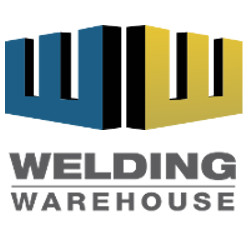AWS A5.16 Titanium & Titanium-Alloy Welding Electrodes & Rods
Titanium alloys are generally classified into three main categories: alpha alloys, which contain neutral alloying elements (such as Sn) and/or alpha stabilizers (such as Al, O) only and are not heat treatable; alpha + beta alloys, which generally contain a combination of alpha and beta stabilizers and are heat treatable to various degrees; and beta alloys, which are metastable and contain sufficient beta stabilizers (such as Mo , V) to completely retain the beta phase upon quenching, and can be solution treated and aged to achieve significant increases in strength.
ERTi-1
CP-1 Titanium is the lowest strength unalloyed (or Commercially Pure–CP) grade. Grade 1 is used in the applications where ductility is paramount, such as explosive cladding, loose linings, expanded metal, and deep drawing applications. It is also used in electrolytic applications like coated anode substrates for production of chlorine and sodium chlorate.
ERTi-2
CP-2 Titanium is the “workhorse” of the industrial corrosion market and most common unalloyed (or Commercially Pure–CP) grade. Grade 2 is generally the most readily available in all product forms and has the lowest cost. It is used for process equipment like pressure vessels, columns, tanks, heat exchangers, shafts, blowers and fans, condenser tubing, valves, fittings, and pipe.
ERTi-3
CP-3 Titanium is a higher strength unalloyed (or Commercially Pure–CP) grade. Grade 3 is used for process equipment, tubing and pipe. Grade 3 is not as readily available as CP-2, but should be considered in applications where its higher strength reduces metal thickness required, and where the quantity of metal justifies a mill purchase.
ERTi-4
CP-4 Titanium is the highest strength unalloyed (or Commercially Pure–CP) grade. Grade 4 is rarely used in corrosion service, but has been used (under AMS Specifications) in aircraft components where its higher strength can reduce the weight of components like bulkheads and firewalls.
ERTi-5
6AL-4V, Grade 5 (ERTi-5), commonly called “6-4,” is the most common and widely used alloy grade due to its relatively low cost and good availability. It has a UTS of 130,000 psi [895 MPa] minimum, good weldability, and can be heat treated to a higher strength or toughness. Grade 5 is used in aircraft components such as landing gear, wing spars, and compressor blades. Its corrosion resistance is generally comparable to Grade 2 and it is often used in corrosion service where higher strength is required, particularly in shafts, high strength bolting, and keys.
ERTi-6
ERTi-6 is discontinued, 5Al-2.5Sn, Alloy A110AT. Please contact us to inquire.
ERTi-7
ERTi-7, Grade 7, has the same mechanical properties as Grade 2. The 0.12 wt% palladium addition improves corrosion performance under mildly reducing conditions or where crevice or under-deposit corrosion is a problem. ERTi-7 can be considered for welding Grade 2 or 16 where improved corrosion performance is desired.
ERTi-9
3Al-2.5V, Grade 9, is a “half” alloy version of Grade 5 and is used for applications where better ductility, formability, and weldability are needed, but lower UTS is acceptable. Grade 9 can be produced in welded or seamless tube and pipe. It is used in applications like oil production tubulars and bicycle frames.
ERTi-11
ERTi-11, Grade 11, has the same mechanical properties as Grade 1. The minimum 0.12 wt% palladium addition improves corrosion performance under mildly reducing conditions or where crevice or under-deposit corrosion is a problem. It is widely used in components for chlorine electrodes and for expensive cladding where enhanced corrosion performance is required. ERTi-11 can be considered for welding Grade 1 or 17 where improved corrosion performance is desired.
ERTi-12
ERTi-12, Grade 12 (Ti 0.8Ni0.3Mo), is an intermediate strength grade originally developed to provide enhanced crevice-corrosion resistance in high temperature brines, but at lower cost than Grade 7. The improved performance is believed to be the result of Ni++ and Mo++ ions that alter the surface electrochemistry of the material in the crevice or under a surface deposit. Grade 12 has better elevated temperature properties than Grade 2 or 3 and is sometimes specified for pressure vessels or piping for its superior strength alone.
ERTi-23
6Al-4VELI, Grade 23, is comparable in chemical composition to Grade 5, but slightly lower aluminum and lower levels of oxygen and other interstitial elements improve fabricability, weldability, and toughness. Grade 23 is used in many high strength industrial applications such as shafts where very high strength, but better toughness and fabricability than Grade 5 is desired. This grade is often specified for marine and offshore energy production components that are exposed to low temperature seawater due to higher fracture toughness values than Grade 5.
